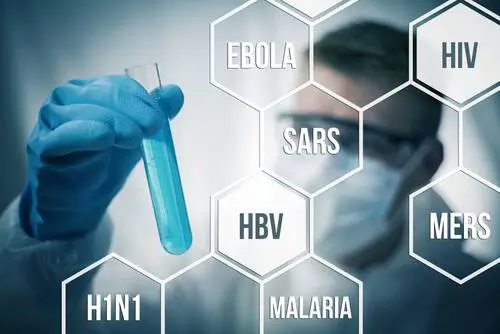Improvements in healthcare and medical procedures and treatments have resulted in several diseases being eliminated from across the world. Increasing research and development, financed by governments, have led to a new global situation where diseases that earlier threatened millions of people no longer exist.
When Prithvi heard tales from his parents and even grandparents, he was fascinated by the way people had lived before technology became a recurring feature in their lives. He was amazed by stories of the village his grandmother had grown up in and he could spend hours just listening to her talk of her childhood. Among other things, he was surprised by how widespread diseases had been and how easily people had succumbed to them. He was amazed to learn that not only humans, but also cattle had succumbed to diseases that no longer exist in the world.
Read on to learn about 5 diseases that have been eliminated by science, in India and elsewhere.
- Polio:
Polio has long been eradicated from India, and the entire South-East Asian region was declared polio-free in 2014. This meant that 80% of the global population could now be certified as polio-free. India’s last polio case was registered in 2011, in the state of West Bengal, while Delhi saw its last case reported in 2009. The polio virus continues to be actively circulated in only a handful of countries in the world today, which includes Pakistan, Afghanistan and Nigeria. - Rinderpest:
Rinderpest was not a disease that affected humans but caused disease and death to livestock including cattle. It was the second disease to be eradicated in India, and the only livestock disease to be eradicated through human efforts globally. The United Nations’ Food and Agriculture Organization declared the eradication of rinderpest in 2010, after 9 years of no diagnoses. - Smallpox:
Smallpox saw a global campaign aimed at its eradication, which finally came about in 1980. The last global natural incidence of smallpox was recorded in Somalia in 1977, according to the World Health Organization. Since then, the only other known case occurred in 1978 because of a laboratory accident in England’s Birmingham. The incident led to the death of one person, but the virus itself was successfully contained. The disease had long been recognized as a menace, with 35% of its victims dying while others were left scarred or blind for life. - Maternal and Neonatal Tetanus:
Maternal and Neonatal Tetanus (MNT) is one of the most recently eliminated diseases, with its elimination in India being announced in August 2015. Since this development, India has been felicitated by global health organizations. MNT posed a threat to mothers and babies in situations where delivery of the child was being conducted in unhygienic circumstances. MNT saw mortality rates being severely affected, with the UNICEF recording as many as 160,000 deaths of young children in India in 1988. The disease was sought to be contained by following hygienic practices at the time of birth and delivery. - Yaws:
India received citations from global bodies such as the WHO and UNICEF for eradicating yaws, in July 2016. This is especially remarkable in light of the fact that the WHO has set a global target for eradicating the disease by 2020. Yaws is a chronic bacterial infection that targets mainly the skin, bones and joints. It was especially prevalent among tribal populations living in remote, hilly and forest areas. Through strenuous efforts, it was eliminated in India in 2006.
However, the elimination of certain diseases has not made the world a safer place. Newer bacteria species have evolved to give rise to newer strains of diseases, and newer medical treatments and cures have to be developed constantly to deal with newer medical threats. Treatments have also evolved to cater to the newer diseases, with critical illness insurance policies being introduced. Critical illness insurance policies act as a cover for people in case they suffer from critical diseases such as cardiovascular disorders or even different kinds of cancer. As the world continuously changes, critical illness insurance is also changing in terms of the diseases that require protection.
After doing some extensive reading and research, Prithvi was pleasantly surprised to learn about such miracles of science and medicine. But equally surprising were the number of new diseases cropping up and the hefty costs that came with their treatment. While many diseases have been eliminated through the efforts of science, many others have arisen to take their place. Prevention continues to be better than cure, and in this space, insurance has emerged as a relief. Critical illness insurance covers provide protection to policyholders and their dependents and help financially in case the policyholder contracts a severe disease.
Presenting the Future Generali Heart and Health Insurance Plan, a comprehensive health protection plan, that safeguards you and your family against financial risks arising out of any defined unforeseen medical emergency. The health insurance plan provides a fixed financial benefit that will help you cover medical costs, especially in case of critical illness which requires long-term treatment, cost of second opinions, post-treatment nursing and above all a loss of income during the affected period.



Comments